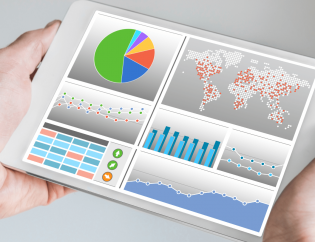
An asset management system manages the entire physical assets of an organization. Physical assets of a business refer to tangible resources owned and utilized by the organization to conduct its operations and generate revenue. These assets have a physical presence and can be seen, touched, and quantified.
Most organizations, small and large, still rely on outdated manual methods for physical asset management, which can lead to inefficiencies, inaccuracies, and missed opportunities.
However, the transition to an asset management system offers numerous benefits, with respect to the way assets are tracked, monitored, and utilized. The system digitizes the entire process of asset management.
In this blog, we explore the importance of shifting from manual to digital asset management and the advantages it brings to your organization.
1. Streamlined Setup
One of the primary advantages of an asset management system is the streamlined setup process. Digital systems offer quick and easy implementation, saving valuable time and minimizing disruptions to your operations.
This streamlined setup process allows organizations to focus on their core activities rather than getting bogged down in system deployment.
2. Efficient Auditing and Monitoring
Digital asset management systems enable organizations to conduct asset audits quickly and efficiently. With the ability to verify physical assets on-demand, organizations can ensure accuracy and compliance with minimal effort.
An asset management system also includes preventive maintenance system. This helps in managing timely asset servicing and the upkeep of your critical assets.
Geo-tagging features allow for precise location tracking, optimizing asset usage, maintenance, and servicing.
This level of efficiency and accuracy is unattainable with manual methods, reducing the risk of errors and improving overall asset management effectiveness.
3. Comprehensive Ticketing and Alerting
Managing asset-related issues is simplified with digital asset management systems' integrated helpdesk and ticketing capabilities. Users can easily track past and current tickets, monitor escalations, and ensure timely resolutions, fostering a proactive approach to asset management.
Real-time alerts and notifications keep stakeholders informed of critical developments, allowing for swift action to mitigate potential problems and minimize disruptions to operations.
4. Flexible Tracking Options and Reporting
Asset management systems offer versatile tracking options, allowing organizations to track assets using barcodes, QR codes, or RFIDs.
This flexibility accommodates a wide range of asset types and environments, ensuring comprehensive coverage and visibility.
Detailed reports and analytics provide valuable insights into asset performance, utilization, and maintenance history, empowering informed decision-making and strategic planning.
5. Seamless Integration and Cost Efficiency
Integration with systems such as inventory and vendor systems streamlines administrative tasks and ensures data consistency across the organization.
Additionally, digital asset management system typically offer cost-effective pricing models, providing exceptional value regardless of the scale of operations.
By eliminating manual processes and reducing dependency on paper-based records, organizations can achieve significant cost savings and operational efficiencies over time.
The Transition Process
Transitioning from a manual to a digital asset management system may seem daunting, but the benefits far outweigh the initial challenges. The process typically involves:
- Assessing current asset management practices and identifying pain points and inefficiencies.
- Researching and selecting a digital asset management system that aligns with organizational needs and goals.
- Planning and executing the implementation process, including data migration, staff training, and system customization.
- Monitoring and evaluating the system's performance post-implementation, making adjustments as necessary to optimize effectiveness.
Conclusion
In conclusion, the shift from manual to digital asset management represents a significant opportunity for organizations to enhance efficiency, accuracy, and productivity.
By leveraging advanced technology and streamlined processes, organizations can gain a competitive edge, reduce operational costs, and unlock new possibilities for growth and innovation.
Embracing digital transformation is not just a choice but a necessity in today's fast-paced business environment. Investing in a robust asset management system is a crucial step towards achieving digitalization and reaping its benefits.









